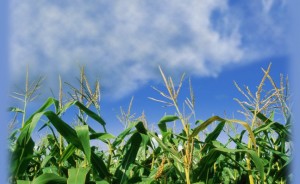 Yet another study has found that Searchinger et al.’s paper on Indirect Land Use was not based on ‘sound science’. According to researchers Professor John Matthews and Dr. Hao Tan, from Macquarie University in Sydney, Australia, the Searchinger paper is more ideology than science and is seeking to put biofuels in the worst possible light. In addition, they say, alternative approaches are more likely to be fruitful in genuinely evaluating effects of biofuels grown around the world. This from the new report, “Biofuels and indirect land use change effects: the debate continues”.
Yet another study has found that Searchinger et al.’s paper on Indirect Land Use was not based on ‘sound science’. According to researchers Professor John Matthews and Dr. Hao Tan, from Macquarie University in Sydney, Australia, the Searchinger paper is more ideology than science and is seeking to put biofuels in the worst possible light. In addition, they say, alternative approaches are more likely to be fruitful in genuinely evaluating effects of biofuels grown around the world. This from the new report, “Biofuels and indirect land use change effects: the debate continues”.
Their efforts revealed that the framework used started with assumptions as to the diversion of grain to ethanol production in the U.S. but then extrapolated these parts of the world, such as sugarcane growing in Brazil, which are actually much more bio-efficient. Professors Mathews and Tan’s analysis concluded that Searchinger et al. failed sound scientific standards on many fronts and that government agencies relying on Searchinger et al. findings for evaluating biofuels would be better served by utilizing other controls.
“Indirect land use change effects are too diffuse and subject to too many arbitrary assumptions to be useful for rule-making,” stated Professor Mathews. “The use of direct and controllable measures such as building statements of origin or biofuels into the contracts that regulate the sale of such commodities would secure better results.”
According to Matthews and Tan, there are six ways Searchinger et al. fell short:
- 1. Direct plantings of biofuels crops around the world are ignored, and instead a spike in U.S. corn-based ethanol is considered a trigger.
2. The U.S. spike is met exclusively by growing corn, but other ways of meeting the U.S. spike, all involving fewer GHG emissions, are ignored.
3. The U.S. spike met entirely within the U.S. – without regard to trade (such as half of the spike being met by Brazilian sugarcane and imported into the U.S.).
4. The Searchinger et al. calculations of carbon release are based on trends recorded in the 1990s but are projected forward up to 2016.
5. Improvements in biomass yields around the world are not considered.
6. The U.S. spike leads to indirect effects around the world without regard to regulatory limits (even in the U.S.).
“If you wished to put U.S. ethanol production in the worst possible light, assuming the worst possible set of production conditions guaranteed to give the worst possible set of indirect land use effects, then the assumptions would not be far from those actually presented in the Searchinger et al. paper,” commented Dr. Hao Tan. “Frankly, better science upon which to base rule-making is available today.”
If you’d like to participate in the debate, then consider attending the Land Use Conference in St. Louis hosted by NCGA (Aug. 25-26). They will be discussing current models, limitations and develop recommendations for future science and policy.

